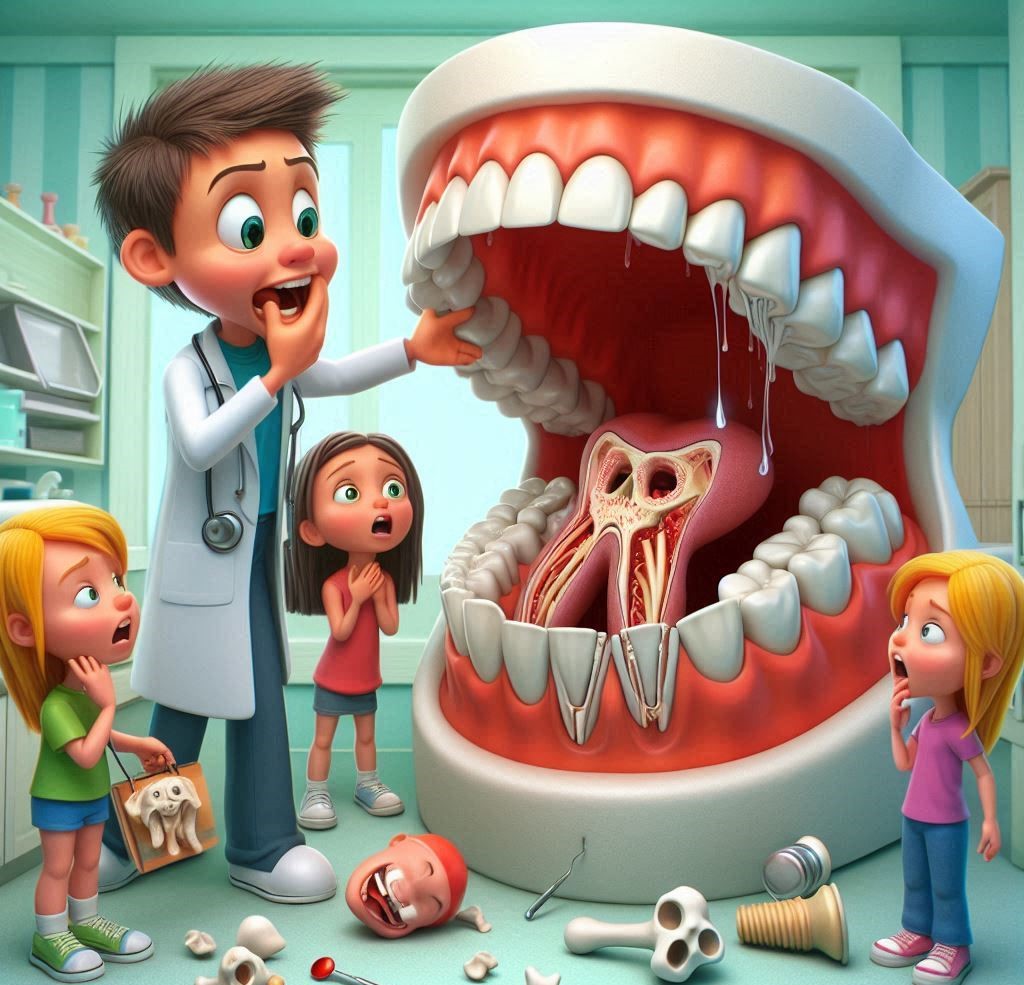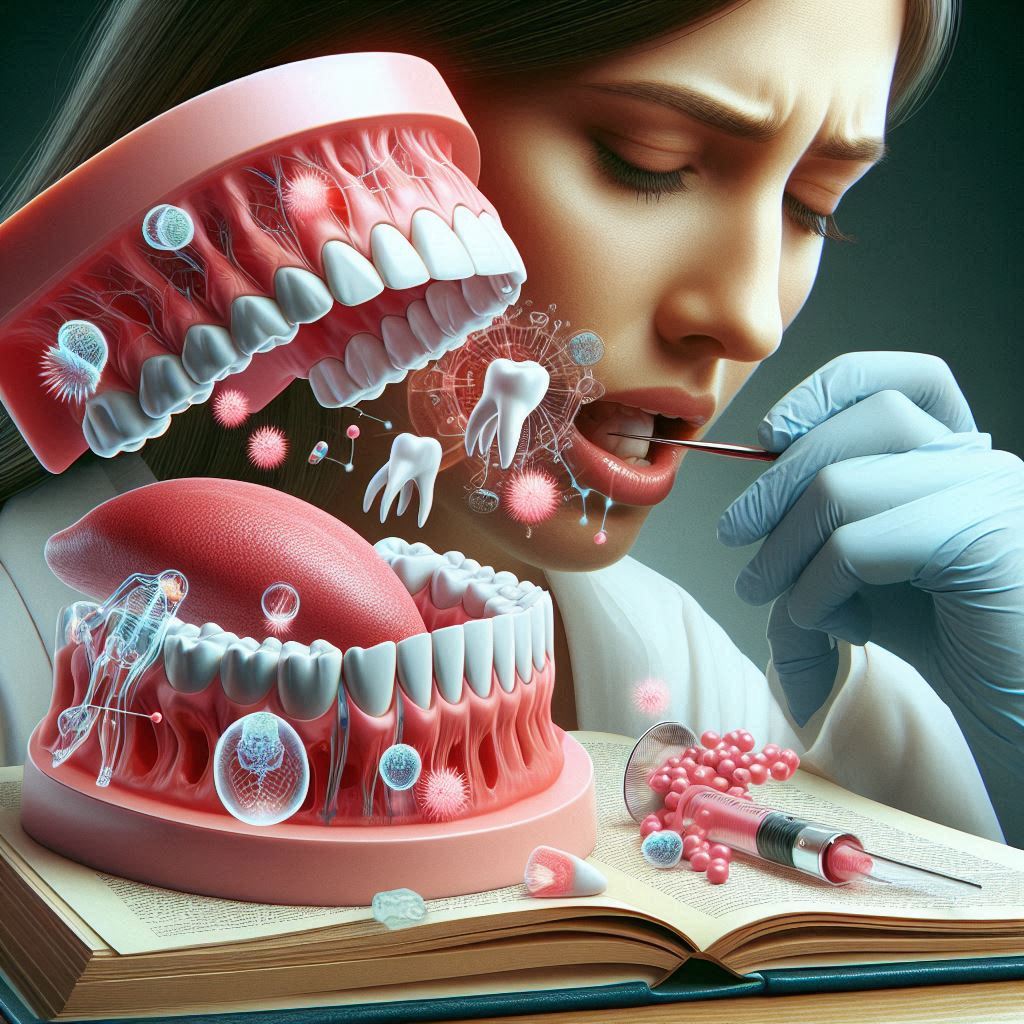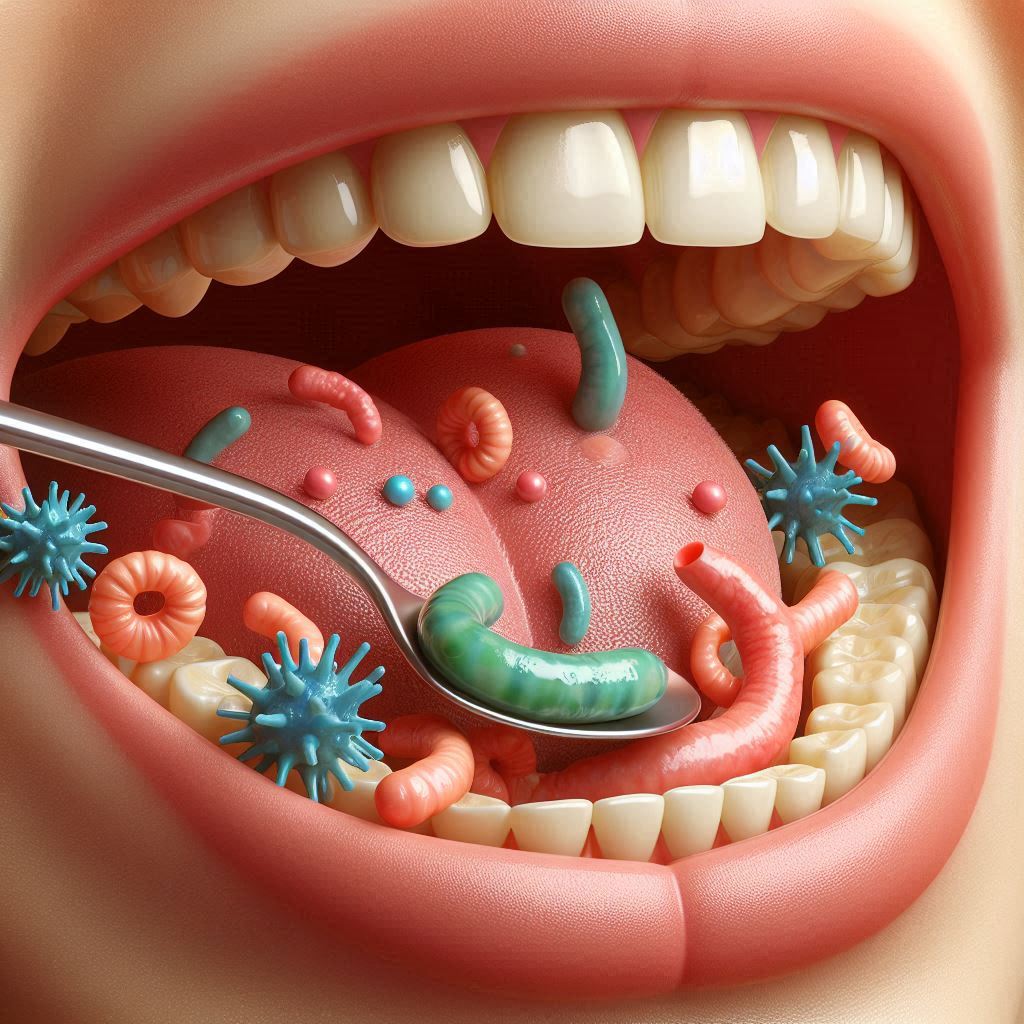Bone growth is typically a well-regulated process essential for developing a healthy skeleton. The human body has intricate systems that ensure bones grow in the right places and the right amounts. However, when bone grows where it shouldn’t, particularly in the oral cavity, it can lead to significant health problems. Abnormal bone growth in the mouth, jaw, or facial bones can cause discomfort, interfere with oral function, and even lead to disfigurement or other systemic health issues.
The causes of these problems are diverse and can range from common conditions like exostoses to rarer genetic and hormonal disorders. Understanding the surprising causes behind these irregularities can aid in prevention, early diagnosis, and effective treatment. In this guide, we explore the science behind oral bone growth, from the basic anatomy of the jaw to the rare genetic conditions that contribute to abnormal bone development.
Anatomy of Oral Bone Structures
Before diving into the causes of abnormal bone growth, it is important to understand the structure and function of the bones in the oral cavity.
Overview of the Oral Cavity and Bone Structures
The oral cavity is surrounded by important bone structures that support both the teeth and the muscles used in eating, speaking, and facial expression. The most significant bones involved are:
- Maxilla: The upper jaw bone, which holds the upper teeth and forms part of the roof of the mouth and the sides of the nose.
- Mandible: The lower jaw, which is the only movable bone of the skull and contains the lower teeth.
- Alveolar bone: The bone that surrounds and supports the roots of the teeth. It is essential for maintaining proper tooth alignment and preventing tooth loss.
These bones form the foundation for the soft tissues of the mouth, such as the gums and mucous membranes. Any disruption in the growth or structure of these bones can lead to significant oral health problems.
Types of Oral Bone Growth
- Normal Bone Growth: During childhood and adolescence, bone formation is regulated by growth plates and is essential for facial and dental development. The alveolar bone grows to support the erupting teeth, and the jawbones develop to accommodate the growing facial structures.
- Abnormal Bone Growth: Conditions such as hyperplasia or heterotopic ossification can cause the body to produce excess bone in places it shouldn’t. These abnormal growths can range from benign growths, like exostoses, to more serious disorders, such as fibrous dysplasia or osteomas.
Common Conditions Involving Abnormal Oral Bone Growth
Several conditions are more commonly associated with abnormal oral bone growth. These include benign growths, genetic disorders, and diseases that affect bone metabolism.
Osteoma of the Jaw
An osteoma is a benign tumor made up of compact bone tissue. While osteomas can occur in various parts of the body, they are most commonly found in the jaw and other facial bones.
- Symptoms: In the early stages, osteomas may not show any noticeable symptoms. However, as they grow, they may cause pain, swelling, and a visible lump in the jaw. Large osteomas can also interfere with tooth alignment or movement.
- Diagnosis: An osteoma is typically diagnosed through X-rays or CT scans, which reveal the characteristic bone growth. In some cases, a biopsy may be performed to rule out other conditions.
- Treatment: Surgical removal is usually the treatment of choice for osteomas, especially if the growth is large, causing pain, or affecting surrounding structures.
Fibrous Dysplasia
Fibrous dysplasia is a condition where normal bone is replaced by fibrous tissue, resulting in abnormal bone growth and structural deformities.
- Causes: Fibrous dysplasia is typically caused by mutations in the GNAS gene, leading to abnormal bone development. It can affect one bone (monostotic) or multiple bones (polyostotic), with the jaw being a common site of involvement.
- Symptoms: The condition may cause pain, swelling, and deformities in the affected bones. The changes in the jaw can lead to difficulty in chewing or speaking, and there may also be visible facial asymmetry.
- Treatment: While there is no cure for fibrous dysplasia, treatment focuses on managing symptoms. This may involve medications to manage pain, surgery to remove large growths, and regular monitoring to ensure the condition does not worsen.
Exostosis (Torus Mandibularis and Torus Palatinus)
Exostosis refers to the growth of benign bone overgrowths in various parts of the body, but in the oral cavity, the most common types are torus mandibularis (on the inner side of the lower jaw) and torus palatinus (on the roof of the mouth).
- Causes: These growths are generally thought to be hereditary, but environmental factors, such as trauma or chronic pressure on the bones, may contribute to their formation.
- Symptoms: Tori often remain asymptomatic, but they may interfere with speech, eating, or the fitting of dental appliances like dentures.
- Treatment: While most cases do not require treatment, surgery may be necessary if the growths become painful or hinder normal oral function.
Osteochondroma
An osteochondroma is a benign growth that consists of both bone and cartilage. It can develop in the jaw and cause abnormal bone growth.
- Symptoms: Like osteomas, osteochondromas often don’t present symptoms until they grow large enough to cause discomfort or interfere with jaw function.
- Diagnosis: Imaging studies such as X-rays, CT scans, or MRIs can help identify osteochondromas. A biopsy may also be done to ensure the growth is benign.
- Treatment: If the osteochondroma causes pain, functional issues, or facial asymmetry, surgical removal is typically recommended.
Rare and Surprising Causes of Abnormal Bone Growth
While conditions like osteomas and fibrous dysplasia are relatively well-known, there are other surprising causes of abnormal bone growth in the mouth, including hormonal and metabolic disorders.
Hyperparathyroidism
Hyperparathyroidism occurs when the parathyroid glands produce too much parathyroid hormone (PTH), leading to imbalanced calcium and phosphorus levels in the body. This can cause the body to break down bone tissue at an accelerated rate.
- Symptoms: In the mouth, hyperparathyroidism may result in jaw enlargement, bone pain, and an increased risk of tooth loss. It can also cause weakened bones that may fracture easily.
- Treatment: Treating hyperparathyroidism typically involves surgery to remove the overactive parathyroid gland(s), along with medications to manage calcium levels.
Paget’s Disease of Bone
Paget’s disease is a chronic disorder in which bones become enlarged and deformed due to abnormal bone remodeling. The condition often affects the spine, pelvis, and skull, including the jaw.
- Symptoms: Jaw involvement can lead to significant bone deformities, pain, and dental problems, including loose teeth or changes in the bite. Patients may also experience headaches and hearing loss.
- Treatment: Paget’s disease can be managed with medications such as bisphosphonates to regulate bone remodeling. In severe cases, surgical intervention may be necessary to correct deformities.
Trauma and Bone Regeneration
Bone growth can also occur in response to trauma. When a bone breaks or is injured, the body sometimes responds by creating extra bone in the area, a process called heterotopic ossification.
- Symptoms: In the oral cavity, trauma-induced bone growth can lead to the formation of bony spurs or extra growth around the injury site. This can cause pain, limited movement, and difficulty chewing.
- Treatment: Treatment typically involves controlling the inflammation and, in some cases, surgically removing excess bone growth if it impedes normal jaw function.
Genetic and Developmental Factors
Certain genetic disorders can lead to abnormal bone growth in the oral cavity, often resulting in significant facial deformities and dental issues.
Craniofacial Syndromes
Conditions like Crouzon syndrome and Apert syndrome cause abnormal bone development in the skull and face, often resulting in premature fusion of skull bones. This can lead to misshapen facial features, including in the jaw.
- Symptoms: These conditions often present in infancy with significant facial abnormalities, including a smaller-than-normal jaw (micrognathia) or abnormal alignment of the teeth.
- Treatment: Treatment often requires surgery to correct the bone abnormalities and improve facial symmetry. Early intervention is key to ensuring proper development of the teeth and facial structures.
Osteogenesis Imperfecta (Brittle Bone Disease)
Osteogenesis imperfecta (OI) is a genetic disorder that affects collagen production, leading to brittle bones that break easily. Though it primarily affects bones throughout the body, it can also impact the jaw and teeth.
- Symptoms: People with OI may have frequent fractures, dental issues like weakened teeth, and deformities in the jawbones. The condition can lead to facial asymmetry and difficulty with oral health.
- Treatment: There is no cure for OI, but treatments focus on preventing fractures and managing symptoms. This may include physical therapy, dental care, and in some cases, surgical intervention to improve jaw function.
Hormonal and Environmental Factors
Hormonal imbalances and environmental factors can also contribute to abnormal bone growth in the oral cavity.
The Role of Hormones in Bone Growth
Hormones like growth hormone, testosterone, and estrogen play crucial roles in regulating bone development. Imbalances, such as acromegaly (excess growth hormone), can lead to abnormal bone growth.
- Symptoms: Acromegaly can cause the jaw to enlarge, leading to a condition known as prognathism, where the lower jaw protrudes forward, affecting both appearance and function.
- Treatment: Hormonal therapies, such as growth hormone inhibitors or surgery, are typically used to manage acromegaly.
Environmental Influences
Environmental factors such as radiation therapy, certain medications, or exposure to chemicals can interfere with normal bone growth.
- Symptoms: Radiation-induced bone growth or bone malformation can cause deformities or excess bone formation in the affected areas. Medications such as bisphosphonates can also cause abnormal bone remodeling.
- Treatment: In many cases, reducing exposure to these environmental factors or using medication to manage symptoms can help prevent further bone growth issues.
Diagnosis of Abnormal Bone Growth
Accurately diagnosing abnormal bone growth in the oral cavity is crucial for effective treatment.
Clinical Examination
A dentist or oral surgeon begins with a thorough clinical examination, checking for visible signs like swelling, deformities, or unusual lumps in the jaw area. Symptoms such as pain or difficulty chewing may also indicate a deeper issue.
Imaging Techniques
X-rays, CT scans, and MRIs are invaluable for diagnosing oral bone growth issues. These imaging techniques can reveal the size, location, and structure of abnormal bone formations, helping doctors determine the appropriate course of action.
Biopsy and Further Testing
If necessary, a biopsy may be taken from the bone growth to confirm whether it is benign or malignant. Further blood tests or genetic screenings may be recommended for conditions linked to genetic disorders.
Treatment Options for Abnormal Oral Bone Growth
Treatment for abnormal oral bone growth depends on the condition and the severity of the symptoms. The primary options are non-surgical management and surgery.
Non-Surgical Management
- Medications for pain, inflammation, and infection management
- Observation and regular monitoring for benign growths
- Use of orthodontic treatments to manage jaw misalignment
Surgical Interventions
- Excision of growths such as osteomas, osteochondromas, or fibrous dysplasia
- Jaw reconstruction surgery to correct facial deformities caused by abnormal bone growth
- Risks associated with surgery, including infection and recovery time
Rehabilitation and Post-Treatment Care
Post-surgery rehabilitation may include physical therapy to restore jaw mobility. It is crucial to monitor the patient’s recovery through regular follow-up visits.
Conclusion
Abnormal bone growth in the oral cavity can arise from numerous factors, varying from benign conditions like osteomas and exostoses to more complex genetic and hormonal disorders. Conditions such as fibrous dysplasia, Paget’s disease, or hyperparathyroidism often contribute to such growths, leading to discomfort, deformities, and functional difficulties. These issues can affect both the structure and the function of the jaw, teeth, and surrounding tissues.
Timely diagnosis and a deep understanding of the underlying causes are essential for effective treatment. Early intervention helps prevent complications such as tooth loss, jaw misalignment, or other long-term oral health problems. Medical advancements in imaging technology, such as X-rays, CT scans, and MRIs, enable better detection of abnormal bone formations, allowing for more accurate assessments and treatment planning.
In many cases, surgical procedures can be employed to remove excess bone growth, correct deformities, or restore function. Post-treatment rehabilitation, including physical therapy and follow-up care, is key to ensuring a full recovery.
With proper treatment and management, individuals affected by abnormal bone growth in the oral cavity can regain normal function, restore facial symmetry, and significantly improve their overall quality of life.
SOURCES
Bertolami, C. N. & Del Grande, P. A. (2016). Fibrous dysplasia of the jaw: Diagnosis and management. Oral Surgery, Oral Medicine, Oral Pathology and Oral Radiology, 122(6), 676-681.
Jones, L. S. & Bashir, M. (2017). Osteomas in the jaw: Clinical review and treatment options. Journal of Clinical Oral Surgery, 45(2), 120-126.
Parker, R. W. & Chang, J. P. (2019). Exostosis of the mandible and palate: Clinical implications and management. International Journal of Oral and Maxillofacial Surgery, 48(3), 345-350.
Smith, M. K. & Fischer, M. P. (2020). Paget’s disease of bone and its oral manifestations. Oral Health and Dental Management, 38(4), 302-307.
Miller, L. J. & Lee, T. W. (2021). The role of imaging techniques in diagnosing abnormal oral bone growth. Journal of Oral and Maxillofacial Radiology, 30(1), 41-48.
Liu, G. H. & Sharma, R. (2022). Genetic and hormonal factors contributing to abnormal bone growth in the oral cavity. Journal of Craniofacial Genetics and Developmental Biology, 42(2), 105-112.
HISTORY
Current Version
March 7, 2025
Written By:
SUMMIYAH MAHMOOD




